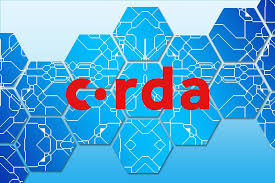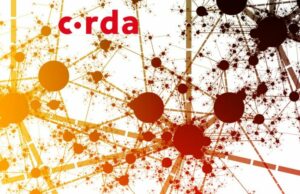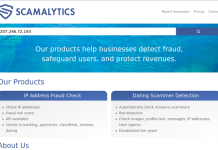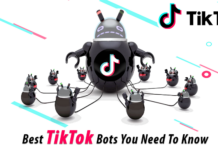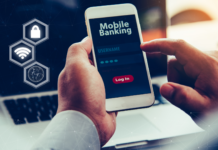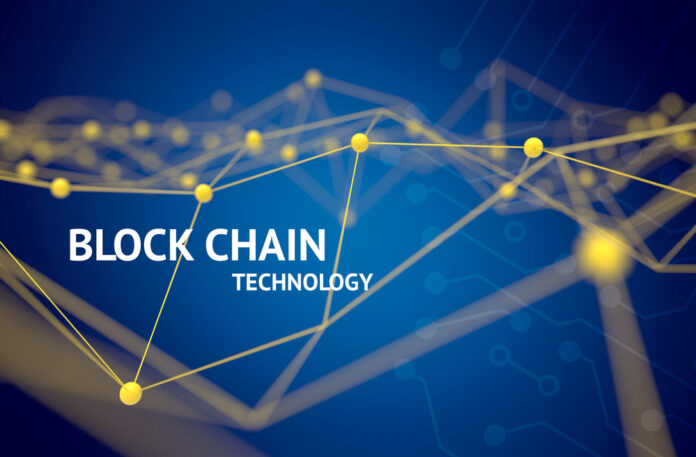
Guide To Create A Blockchain will be described in this article. $6.6 billion was spent on blockchain solutions in 2021 – and the interest in the technology just keeps growing. It’s not only the technology behind Bitcoins and other forms of crypto currency now. No, with how many industries already use blockchains with success and in how many different ways the technology could help businesses worldwide, blockchains are set to revolutionize the world. For example, 52% of experts believe blockchain will be essential to verifying customer identity in the future and spotting fraudulent transactions or activities. Blockchains will also be indispensable in transforming our currently very centralized financial system to a much faster and safer decentralized (Defi – from decentralized finance) one.
How To Create A Blockchain Complete Guide
In this article, you can know about Benefits Of Effective Advertisements here are the details below;
How to create a blockchain network yourself, though? With the number of platforms out there, there are several different ways, depending on which solution will you choose.
In this paper, we’ll show you how to start running your own blockchain network using the Corda platform as an example and why you should even consider building your new app on the blockchain.
What are the benefits of creating a blockchain?
Banking, healthcare, agriculture, software development, and plenty of other industries are either already using or planning to use blockchains in the future. It’s estimated that using blockchains could boost global GDP by $1.76 trillion by 2030.
- What exactly can blockchains help businesses with?
- Increasing security and speed of transactions by storing the data in a decentralized blockchain rather than a single database
- Decreasing business operational costs and simplifying processes (for example, in logistics and supply chains)
- Giving far greater data transparency than ever before with the data being immediately updated and shared between all nodes
Protecting business data from manipulation as the ledger nodes can’t be edited after being added to the blockchain.
Since blockchain works as a trustless environment (as in, a place where trust isn’t needed because every member of the network can verify every transaction and network on the ledger), it’s a much safer place to store sensitive business information.
Software development is also taking advantage of blockchain technology to solve several issues with mobile and IoT app development. For example, with data security. Blockchain applications (called decentralized applications or Dapps) have the entire data encrypted with a cryptographic hash and all changes visible to everyone in the network, thus making the apps far more secure. And as every node in the network has an exact copy of the information stored and any changes must be confirmed via consensus, the entire system is virtually tamper-proof and resistant to system failures. Also check Crypto Yield Farming
The increased security is just one of the benefits that businesses can use to stay ahead of the competition and attract more users to their products though. Many apps nowadays also let their users pay for items or services using cryptocurrency or special platform tokens – and the interest in those methods of payments is also growing as 39% of consumers believe cryptocurrencies should be used for payments, not just investment.
How to choose a blockchain platform
If you want to add cryptocurrency payments to your new app or start hosting data on the blockchain though, first you need to choose one of the main blockchain solutions. And this might be a slightly tricky thing to do.
If you have already started researching the platforms, then the sheer number of options has surely caught your attention. Earthweb claims there are at least 1000 blockchain platforms on the market – Ethereum, Ripple, Stellar, or Corda, just to name a few.
Which one out of all those should you pick?
With so many options, it would be a good idea to first research and note down your goals, plans, and expectations for the blockchain solution, as this will help you compare the features in each platform. In particular, you should consider:
- Whether you are okay with using a public (open to all users) blockchain network or you need a private (available only with invitations) network built only for your company.
- What features do you need for your business blockchain network (for example, not all blockchain platforms offer smart contracts yet, so if this is something you need to have, you need to make sure the chosen platform supports it)
- How many transactions you expect to have to pass through the blockchain (the more transactions you need the blockchain to manage, the higher the solution’s TPS or transaction per second should be)
What makes the decision even harder is that the majority of platforms differ when it comes to what they can do and what features do they have – some were also designed with specific industries in mind. We covered the main factors you should especially pay attention to when researching your blockchain solutions in our other article, Choose a perfect blockchain platform – the must-know blockchain platforms list. Inside it, we also added a short description of the most popular platforms to give you some insight of what to consider while comparing blockchain solutions to make sure you pick the best one. This is another way of how to create a blockchain.
How to build a blockchain network – Corda example
Now we will be going into some technical details on what you need to create your new network and how you can make a new blockchain network yourself. For the guide, we chose Corda since it is well documented and relatively easy to extend the platform, so it should give you a good understanding of how to set up a blockchain network.
Corda is a permissioned peer-to-peer (P2P) distributed ledger technology that was initially designed mainly for financial institutions to help them reduce operational costs while speeding up transaction processing. But the platform turned out to be equally valuable for other industries. In healthcare, for example, Corda is used to connect the various healthcare databases and build a single, updated patient profile. And as the records are stored in time-stamped, encrypted, and immutable blocks in the chain, there’s little risk that someone unauthorized could access or alter the data inside those. Corda is also gaining popularity in a variety of industries, including digital assets, identity verification, and government sectors.
We picked this platform for the guide for a couple of reasons:
- Thanks to P2P architecture and the “building blocks” app architecture, it’s easy to scale.
- Corda works as a private network (only people who you invite to the network can join it), so it’s great for hosting sensitive business data on it.
- Corda platform is very agile and flexible, so companies can build their app and network exactly the way they want it
- Thanks to the integration features inside it dedicated to enterprise systems, the blockchain network can be easily connected to the company’s main tools.
- Since Corda has a large community centered around the platform, it receives regular updates, updates, and enhancements. This is another way of how to create a blockchain.
What are CorDapps?
CorDapps (Corda Distributed Applications) are applications that run on the Corda platform, through which the nodes in the Corda network can communicate and take actions. To work, they needed to be installed on the Corda nodes.
The applications can be written in any JVM-compatible language, so if you are familiar with Javascript or Kotlin programming language, then you shouldn’t have much trouble creating your own ones. What makes building those Dapps even easier, those apps can be built faster using the available app templates that users can customize, and later, developers can also quickly add new features through the modular API.
A CordApp is made of three main elements:
- States: A state is an immutable object storing a fact known by one or more Corda nodes. They can hold any kind of data – from identity information to KYC data, stocks, and so on. The states are also immutable, which means the neither of the previous blocks can be edited – instead, all changes are added as new blocks.
- Contracts: Corda Contracts are written in Java or Kotlin and define the transaction or data validation criteria. If both the input state and output state confirm the transaction as correct, then the transaction is accepted and is added to the ledger. If they don’t, then the transaction is denied. One CorDapp can store one or more contracts related to one or more states on the network. This is another way of how to create a blockchain.
- Flows: A Corda flow is a sequence of steps that tells a node how to add the data to the ledger, for example when issuing an asset or settling a trade. But rather than forcing users to take those steps manually, Flows can automate those tasks. Corda also gives developers a ready library of flows for handling most common tasks, meaning that developers do not have to write those themselves.
- For the technical instruction on how to build the blockchain from scratch, you can find a step-by-step guide under this link. Or to make things easier for you, you can use a ready Java or Kotlin CorDapp template available on the R3 website and only customize those to your needs.
Joining a Corda network
Now that we’ve looked at Corda from the inside, let’s talk about the network and how you can join it yourself. The Corda network is made of nodes, aka users who were invited to join the network. Each node runs an instance of Corda and one or more CorDapps installed on the node.
What makes Corda different from other distributed ledgers is that communication between nodes is point-to-point, and data is only shared if needed. Since the nodes in a network can send messages directly to each other, there’s no need for sharing the data between every node in the network. And if the recipient is offline, the message will wait in an outbound queue until they are online again – pretty much like an email.
Their consensus algorithm is also different from other blockchains as Corda uses two – one to ensure that the ledger updates are unique and the other to verify whether the update is valid. Thanks to those, Corda doesn’t need to use proof-of-work or proof-of-stake algorithms like other blockchains.
As for how the network itself works: inside the network, there are four categories of nodes, with different roles to perform in the network. Those are:
Network map: The network map node allows nodes to discover and connect to other compatible nodes.
Notary: Notary node is responsible for verifying the input state in each transaction and either signing or rejecting the transaction. The notary also acts as the time-stamping authority.
Oracle: A node that supplies external information to smart contracts and works as a bridge between the ledger and the outside world. Basically, it gathers the requested outside information, confirms or disproves it, and relays it back to the node. If the information gathered matches the terms inside a smart contract, Oracle can then automatically execute it. What’s important is that the oracle doesn’t need to see the contents of the entire agreement – only the part it needs to validate.
Regular nodes: Separate users that can communicate with other nodes, notaries, and oracles and accept updates to the ledger. This is another way of how to create a blockchain.
Each node in the network has an identifying name (in the form of an X.500 name) and a public address, through which the node can communicate with other nodes in the network. For that, the nodes use the network map service that stores and publishes a list of nodes and their services, along with information about them.
Joining the Corda platform
To start using Corda, you first must register on the R3 network. If you don’t have an account on R3 yet, then you need to first fill the Contact Us form with the following questions answered:
- Are you planning to build a new Corda application, already have a ready one, or want to use an existing blockchain application?
- If you have a running application, you need to write what is its name and purpose.
- Are you planning to use Corda Open Source or Enterprise version?
- Then, an R3 representative will reach out to you, discuss your needs and pricing for using the platform and help you with the onboarding process.
- Once this is done, you can register yourself on the network – keep in mind though that since Corda is a permissioned blockchain network, your registration must be approved first.
After that, you’ll have to fill some technical requirements, such as configuring and deploying your node and then registering it to the service – you can find all the requirements and steps in the Corda onboarding tutorial. This is another way of how to create a blockchain.
When to hire a blockchain development expert?
If you have a good grasp of Java or Kotlin language, then creating your own app
If you don’t have time to do the coding yourself though or want to speed up the development process of your new app, then your most suitable bet would be to reach out to blockchain developers who can help you with designing and setting up your network. This is another way of how to create a blockchain.
And if you do not quite understand how the technology even works and want someone with experience in fintech/crypto/blockchain to join your team, asking for help from someone experienced in blockchain app development will save you a lot of time (and money) in the long run.
As we worked on multiple applications that included building a blockchain network or adding support for a cryptocurrency (for iGaming, sports betting, MedTech, and fintech industries), we know the sector basically like the back of our hand. So whether you are thinking about building a blockchain app or setting up a private network for your company, there’s a good chance we can help you with it.
Conclusion
With so many things you can do with blockchain technology and the features it can offer, we can be sure that this technology is only going to get more popular in the future. Whether you are working in the business, finances, or healthcare industry, the implementation of a blockchain network can give you plenty of benefits, starting from higher than ever before data security to much faster transactions with full transparency.
Our guide above should help you a bit in introducing your business to the blockchain industry. And if you have any doubts or questions, we are ready to answer those – or help you move your newest block chain project forward.


